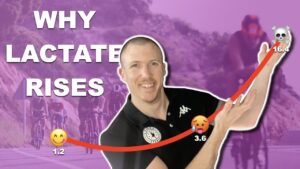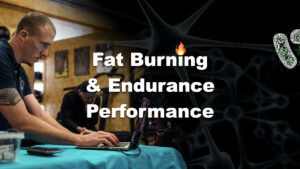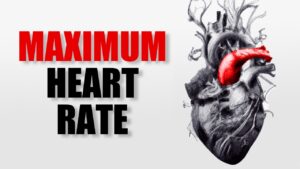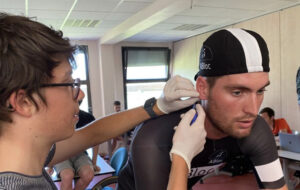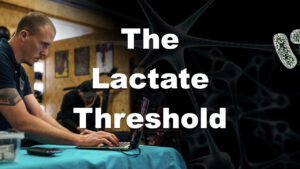Welcome to Upside Strength, your premier destination for unraveling the complexities and unlocking the potential of Exercise Physiology.
Every athlete, coach, and sports enthusiast can improve their journey using exercise physiology. This field helps us illuminate the how and why behind physical performance. It also paves the way for groundbreaking training methodologies and performance enhancements.
Why Exercise Physiology Matters at Upside Strength
In a world where athletic performance is as much about understanding the science as it is about on-field practice, Upside Strength stands at the forefront, bridging this crucial gap. Exercise Physiology isn’t just a topic for us; it’s the foundation upon which all our training philosophies and methodologies are built.
Whether you’re a budding athlete, a seasoned coach, or a fitness enthusiast, understanding the principles of exercise physiology is key to unlocking your full potential.
Navigating the Depths of Exercise Physiology
Our comprehensive page on Exercise Physiology delves deep into the core elements of this dynamic field. From exploring the intricacies of muscle physiology and energy systems to examining the latest research on training adaptations and recovery strategies, we cover it all. This pillar page serves as your gateway to understanding how physiological principles can be applied to enhance training, prevent injuries, and boost overall athletic performance.
Empowering Your Journey with Science-Backed Insights
At Upside Strength, we believe in empowering our community with knowledge. This page is meticulously curated with in-depth articles, expert interviews, and evidence-based training tips, all designed to provide you with a holistic understanding of exercise physiology.
Our goal is to transform complex scientific concepts into actionable insights that you can apply in your training or coaching.
Join the Upside Strength Community
Embark on a journey of discovery with Upside Strength and redefine what’s possible in your athletic endeavors. Stay tuned as we continuously update this page with the latest findings and innovative approaches in the realm of exercise physiology. Together, let’s push the boundaries of sports performance and training excellence!
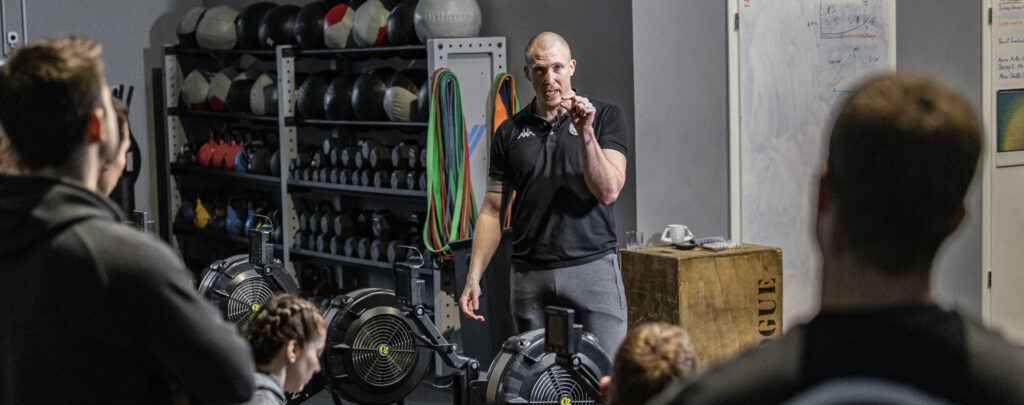
Table of Contents: Exercise Physiology Ressources
- Introduction
- Exercise Physiology: Definition and Scope
- Key Systems in Exercise Physiology
- Bioenergetics & Energy Systems
- Adaptations to Physical Exercise
- Strength Training Principles
- Endurance Training Concepts
- Exercise Testing & Monitoring
- Nutrition in Exercise Physiology
An Introduction to Exercise Physiology
Exercise physiology delves into the study of human performance during physical exertion, examining how physical activity impacts the human body‘s structure and functions. It offers an evolutionary perspective on human adaptability, also shedding light on current issues related to “lifestyle diseases.”
This field explores the intricate relationships among metabolism, thermoregulation, and the cardiovascular, respiratory, and muscular systems. Studying adaptations in human endurance and strength through training allows us to better understand how the body works and how we can improve its function.
Exercise Physiology: Definition and Scope
Exercise physiology is a branch of science that studies how the body responds and adapts to physical activity. This field encompasses various aspects ranging from biochemical processes to whole-body system responses.
Understanding exercise physiology is crucial for designing effective exercise programs, enhancing athletic performance, and managing health conditions through physical activity.
Key Body Systems Involved in Exercise Physiology
The human body is a complex organism composed of many interconnected systems. In order to better study them, we can break them up into the following categories:
- Musculoskeletal System: This system includes bones, muscles, and connective tissues. It plays a pivotal role in movement and stability during physical activity. Understanding how muscles contract and generate force is essential in exercise physiology.
- Cardiovascular System: The heart and blood vessels work to deliver oxygen and nutrients to our muscles during exercise. The efficiency of this system directly impacts endurance performance and health.
- Respiratory System: The lungs and associated pathways are responsible for oxygen intake and carbon dioxide expulsion. The respiratory system’s capacity can limit (or enhance) athletic performance.
- Nervous System: The nervous system includes the brain, spinal cord, and a complex network of nerves. This system sends messages back and forth between our brain and body. It is also charged with regulating key processes inside the body.
- Endocrine System: The hormones produced and secreted by the glands in our endocrine system are responsible for regulating almost every process in our body. These substances play a key role in orchestrating various bodily functions, including metabolism, growth and development, emotions, mood, sexual function, and sleep.
Bioenergetics and Energy Systems in Exercise Physiology
Bioenergetics is the study of how energy gets transformed inside the human body. ATP (adenosine triphosphate) is the main energetic currency of all living organisms. This molecule is broken down to make energy available.

To recycle ATP, our cells use three main metabolic pathways.
- The Phosphagenic System (also called “Anaerobic Alactic”): This system provides immediate energy to fuel muscle contractions and sustain cellular structures, through stored adenosine triphosphate (ATP) and creatine phosphate (PCr).
- The Glycolytic System (“Anaerobic Lactic”): This system recycles ATP through the breakdown of blood glucose and stored glycogen in Lactate.
- The Oxidative System (“Aerobic“)“: This system generates ATP through cellular respiration involving the consumption of oxygen. It is a crucial pathway that utilizes carbohydrates, fats, and sometimes proteins as fuel sources to power the other energy systems and the body itself.
See our Latest Articles on Bioenergetics in Exercise Physiology
Adaptations to Physical Exercise
Adaptations to exercise can be categorized in the following ways:
- Cardiovascular Adaptations: Regular exercise leads to improvements in heart function, blood flow, and a reduction in resting heart rate.
- Muscular Adaptations: Increased muscle size (hypertrophy), strength, and endurance are common adaptations to consistent training.
- Respiratory Adaptations: Enhanced lung capacity and efficiency are seen in individuals who engage in regular aerobic activities.
- Nervous Adaptations: Exercise has a direct impact on the structure and function of the nervous system.
Strength Training: Core Principles
Strength training, at its core, is about systematically applying resistance to muscle tissue in order to enhance physical strength, muscular development, and endurance. Understanding its fundamental principles is crucial for effective and safe workouts.

Resistance and Adaptation: The basis of strength training lies in resistance. This can be achieved through external weights, body weight, or resistance bands. Muscles adapt and grow stronger when consistently challenged with increasing resistance. This adaptation is the body’s natural response to stress, leading to muscle hypertrophy (growth).
Specificity Principle: This principle emphasizes that training should be relevant to the goals. For instance, a sprinter would focus on explosive leg exercises, while a bodybuilder would aim for overall muscular hypertrophy. Tailoring exercises to specific goals ensures targeted improvements.
Overload Principle: For muscles to grow, they must be worked harder than they are used to. Progressive overload can be achieved in many ways such as gradually increasing the weight, frequency, or number of repetitions in your training to challenge muscles further.
Recovery and Rest: Contrary to popular belief, muscles grow during rest periods, not during workouts. Adequate rest, including sleep and days off from training, is essential for muscle recovery and growth. Overtraining can lead to injuries and stagnation.
See our Latest Articles on Strength Training
Endurance Training & Performance: Key Concepts
The principles outlined for strength training also apply to endurance training. In addition to those basic principles, there are a few key concepts that we need to understand as they relate to endurance training and performance.
Exercise Intensity Domains: Different intensity domains elicit distinct physiological responses in the body. Those responses can be quantified using oxygen consumption, gas exchange measurements, blood lactate, muscle oximetry, and more.
Physiological Thresholds: The two thresholds mark the transition between different exercise intensity domains. Despite there only being two physiological thresholds, we have many different names for them both.

VO2max: VO2max, or maximal oxygen uptake, is the greatest amount of oxygen that can be used by the body during intense exercise and is a key indicator of cardiovascular fitness and aerobic endurance.
Economy: Economy in endurance training refers to the efficiency with which an athlete uses energy (and oxygen) to maintain a given pace or power output. A better economy means using less energy for the same performance.
Durability: Durability is a key performance indicator in long-distance endurance sports. It describes the ability to sustain a high level of performance over an extended period and resist fatigue.
See our Latest Articles on Endurance Training
- Understanding Heat Training Adaptations – Part 1

- Maximum Heart Rate: The COMPLETE Guide

- FTP (Functional Threshold Power) or Lactate Threshold in Cycling?

Exercise Testing and Monitoring
Measuring the interaction between physical performance and physiological demands can help us better understand how the body works. Physiological Testing (through vo2max testing, lactate testing, moxy monitor testing or more), also allows us to determine the effectiveness of different training plans, and quantify progress and individualized training for each individual athlete.

In recent years, the market for technological tools (sometimes called “wearables”) has exploded. By monitoring different physiological responses (heart rate, heart rate variability, oxygen saturation, etc…), they aim to improve training, performance, and recovery.
Those are both key components of exercise physiology.
Recent Articles about Exercise Testing & Monitoring
- FTP (Functional Threshold Power) or Lactate Threshold in Cycling?

- Lactate Threshold Interpretation Methods

- What is the Lactate Threshold?

Nutrition in Exercise Physiology
Nutrition is integral to exercise physiology, with macronutrients like carbohydrates, proteins, and fats playing distinct roles. Carbohydrates are crucial for high-intensity and endurance activities, providing immediate energy. Proteins aid in muscle repair and growth, essential for strength training, while fats fuel longer, moderate efforts. Micronutrients, including vitamins and minerals, are also vital, supporting energy production and muscle function.
What is Upside Strength?
Upside Strength is a movement led by Sean Seale that helps athletes and coaches bridge the gap between scientific theory and on-the-ground reality. Want to improve your health or boost your performance? Upside Strength is here to help. You can start by listening to a podcast or watching a video on Youtube. Support Upside Strength and reach your goals by taking a course or training program.
